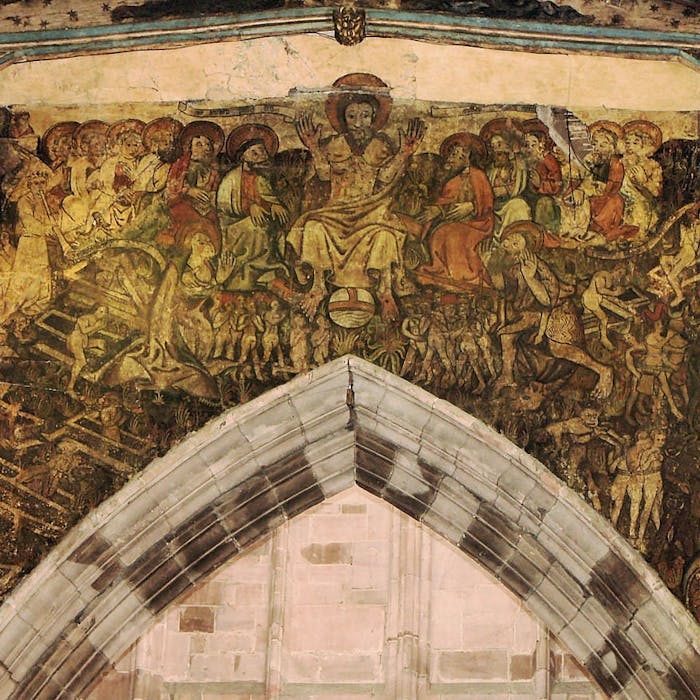
The Coventry Doom - wonderful medieval church decoration
Church decoration was once more flamboyant in Britain, with painted plaster, statues and pillars embellishing religious buildings. Time, fashion, the Reformation, and Puritanism erased much of that, but a few Medieval church decorations still survive. One such is Coventry's "Doom" painting.
The Holy Trinity Church in the centre of Coventry, not far from the Cathedral, dates back to at least the 13th century. It has great architectural merit in its own right, but the real star of the show is the “Coventry Doom.”
Doom paintings were common features in English medieval churches, but few have survived to this day. This intriguing artwork stretches across an arch underneath the tower.
Created during the 1430s, the painting of the Last Judgement, also known as the "Coventry Doom", was designed to demonstrate the eternal consequences of both charitable and uncharitable acts. It pre-dates other masterpieces, like Leonardo da Vinci’s The Last Supper, by several years.
The picture may have been created as a result of Coventry having experienced an earthquake around that time, making church leaders think that the Day of Judgement was soon to come.
The painting has twice disappeared from view across the centuries. After the English Reformation, Puritan clerics covered the artwork in whitewash. This was done because during the reign of Elizabeth I, such images were considered too popish.
Then, after a painstaking 19th-century restoration, the painting was varnished with the wrong material. This meant it quickly darkened and eventually went black, obscuring the image until it was rediscovered in 1986, after a small fire in the church burned away some of the concealing material.
After years of painstaking restoration and conservation, it was finally revealed in its current glory in 2004. It is said to be one of the most important discoveries in the field of medieval art. Christ can clearly be seen at the centre with acts of charity and the route to heaven on one side and uncharitable acts and the route to hell on the other. The gates to heaven and hell, as understood at the time, are clearly depicted.
Further reading
Links to external websites are not maintained by Bite Sized Britain. They are provided to give users access to additional information. Bite Sized Britain is not responsible for the content of these external websites.
